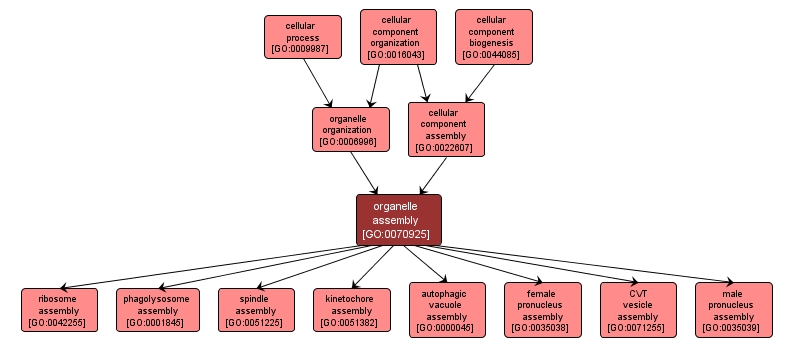| Desc: |
The aggregation, arrangement and bonding together of a set of components to form an organelle. An organelle is an organized structure of distinctive morphology and function. Includes the nucleus, mitochondria, plastids, vacuoles, vesicles, ribosomes and the cytoskeleton. Excludes the plasma membrane. |














